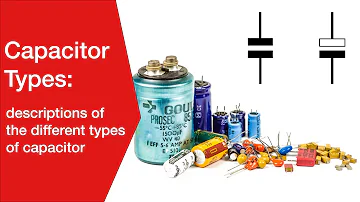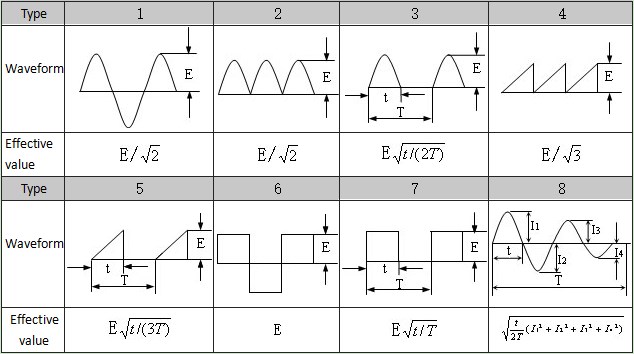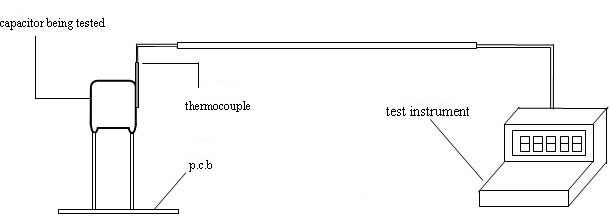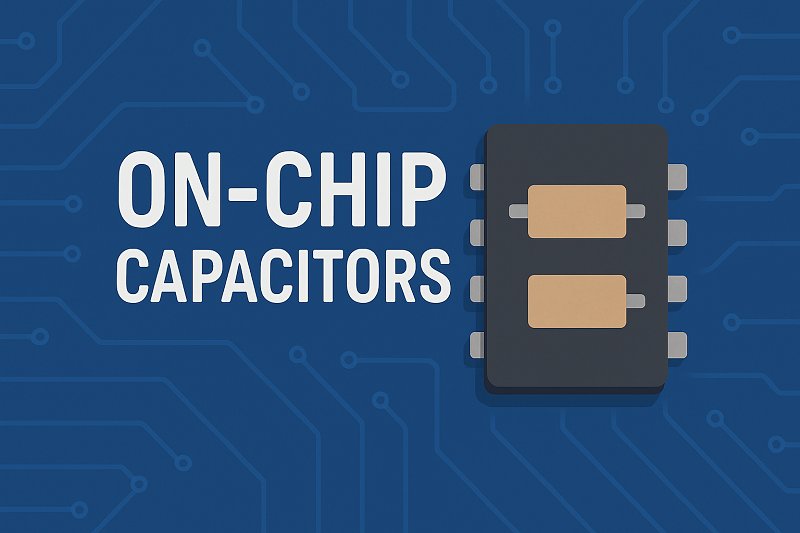Basic Introduction to Film Capacitors

Capacitor Types: electrolytic, ceramic, tantalum, plastic film
⚡ Article Updated October 2025 - Includes Latest Industry Developments ⚡
📚 Catalog
III. Metallized Film Capacitors
IV. Precautions for Using Film Capacitors
V. Market Trends and Future Outlook (2024-2025)
📊 Global Film Capacitor Market (2024-2025)
Market Size 2024: USD 4.2-5.0 billion
Projected 2034: USD 6.34 billion
Growth Rate: 3.7-4.2% CAGR
Leading Region: Asia-Pacific (34.6% market share)
Key Drivers: Electric vehicles, renewable energy, 5G infrastructure
I. Basic Structure
The internal structure of film capacitors consists of metal foil (or metallized plastic film) used as electrode plates, and plastic film used as the dielectric. These components are combined through winding or stacking processes. The different arrangements of foils and films enable a variety of construction methods, making film capacitors highly versatile for diverse applications.

Typical schematic diagram of thin-film capacitors
Film capacitors are constructed using metal foil as electrodes, paired with plastic films such as polyethylene, polypropylene, polystyrene, or polycarbonate as the dielectric material. These films are overlapped from both ends and wound into a cylindrical structure. Based on the plastic film type, capacitors are categorized as:
Polyethylene capacitors (also known as Mylar capacitors)
Polypropylene capacitors (PP capacitors) - Most widely used today
Polystyrene capacitors (PS capacitors)
Polycarbonate capacitors
Polyphenylene sulfide (PPS) capacitors - For high-temperature applications
Polyethylene naphthalate (PEN) capacitors - Emerging technology
2024-2025 Update: Polypropylene (PP) films dominate the market with 53.5% market share due to their exceptional dielectric strength, low dissipation factor, and superior thermal performance. New developments include high-temperature PP films capable of operating at temperatures up to 150°C, significantly expanding their application range in electric vehicles and renewable energy systems.
II. Basic Characteristics

Modern film capacitor construction
Film capacitors possess numerous excellent characteristics that make them indispensable in modern electronics. Their primary advantages include: non-polarity, high insulation resistance, excellent frequency characteristics (wide frequency response), and low dielectric loss. These attributes make film capacitors ideal for analog circuits, particularly in signal transmission paths where frequency fidelity and minimal distortion are critical.
The structure resembles that of a paper dielectric capacitor, with the medium being polyester or polystyrene. Polyester film capacitors offer high dielectric constant, compact size, large capacity, and good stability, making them suitable as bypass capacitors. Polystyrene film capacitors feature low dielectric loss and high insulation resistance, with applications in high-frequency circuits, though they have larger temperature coefficients.
Modern Performance Characteristics (2024-2025):
Temperature Range: -55°C to +150°C (advanced PP films with special coatings)
Voltage Ratings: Up to 1600V for new ultra-high voltage PP capacitors
Dielectric Strength: Enhanced through advanced manufacturing techniques
Self-Healing Properties: Metallized versions offer improved reliability
Miniaturization: New designs achieve 40% size reduction compared to 2020 models
Among all plastic film capacitors, polypropylene (PP) and polystyrene (PS) capacitors demonstrate the most remarkable characteristics. While historically more expensive, the increased focus on audio and electronic equipment quality has made these premium capacitors more common. In 2024-2025, PP capacitors have become the industry standard for high-reliability applications, with manufacturers increasingly specifying them for electric vehicle powertrains, renewable energy inverters, and 5G telecommunications infrastructure.
Summary of Key Specifications:
Capacity Range: 100pF to 170μF (expanded from earlier 3pF-0.1μF range)
DC Working Voltage: 50V to 1600V (significantly increased from 63-500V)
Applications: High frequency and low frequency circuits
Insulation Resistance: Greater than 10,000MΩ
Operating Temperature: Up to 150°C for advanced films
III. Metallized Film Capacitors

Metallized film capacitors with self-healing properties
Metallized film capacitors represent an advanced manufacturing technique where a thin layer of metal is vacuum-deposited onto plastic film to serve as the electrode, rather than using separate metal foils. This method, known as Metallized Film technology, eliminates the thickness of the electrode foil, significantly reducing the volume per unit capacitance. This innovation enables production of compact capacitors with both small and large capacitance values.
Common examples include MKP capacitors (Metallized Polypropylene Film Capacitor) and MKT capacitors (Metallized Polyester Capacitor). Films used for metallized capacitors include polyethylene, polypropylene, polycarbonate, and newer materials like PPS and PEN. These capacitors are available in both wound and laminated configurations.
Self-Healing Action
The most significant advantage of metallized film capacitors is their self-healing property. When a small section of the electrode experiences a short circuit due to localized dielectric weakness, the electrostatic energy or short-circuit current causes the metallized layer at the fault point to melt and evaporate instantly. This creates a small metal-free zone, restoring insulation between the electrodes and allowing the capacitor to continue functioning. This self-healing mechanism dramatically enhances reliability compared to conventional foil capacitors.
2024-2025 Innovations: Advanced metallization techniques using zinc-aluminum alloys and improved coating uniformity have enhanced self-healing capabilities. New AI-based manufacturing controls implemented in 2025 have reduced defect rates by 18% while increasing production throughput by 14%.
Advantages and Limitations
Key Advantages:
Self-healing property eliminates short-circuit failure modes
Compact size due to thin metallized layer
Higher volumetric efficiency
Improved reliability in harsh environments
Cost-effective for mass production
Limitations Compared to Metal Foil Capacitors:
1. Capacity Stability: Metallized capacitors may experience capacity loss over time due to self-healing events under long-term operating conditions, particularly at elevated temperatures. For oscillation circuits requiring high capacity stability, metal foil capacitors remain preferable.
2. Current Handling: The thin metallized layer has limited ability to carry large currents compared to thicker metal foils. However, modern improvements address this through:
Double-sided metallized film electrodes
Increased metallization layer thickness (optimized for application)
Enhanced metal spraying (schoopage) processes to reduce contact resistance
Advanced termination designs for better current distribution
IV. Precautions for Using Film Capacitors
1. Working Voltage
The selection of film capacitors depends critically on the maximum applied voltage and is influenced by factors including voltage waveform, current waveform, frequency, ambient temperature (capacitor surface temperature), and capacitance value. Before installation, verify that the voltage waveform, current waveform, and frequency at both capacitor terminals fall within rated specifications. For high-frequency applications, allowable voltage varies by capacitor type—consult manufacturer datasheets for specific derating curves.
Important: Modern power electronics applications, especially in electric vehicles and renewable energy systems, may subject capacitors to rapid voltage transients and high dv/dt conditions. Ensure selected capacitors are rated for the specific application's stress profile.
2. Working Current
The pulse (or AC) current through a capacitor equals the product of capacitance C and the rate of voltage rise: I = C × dV/dt. Due to dielectric losses, operation under high frequency or high pulse conditions causes internal heating, which can lead to thermal breakdown (smoke or fire). Therefore, safe operating conditions are limited by both rated voltage and rated current specifications.
Rated current comprises two components:
Pulse current (peak current, limited by dV/dt)
Continuous current (expressed as peak-to-peak or RMS value)
For high-frequency or high-pulse applications, polypropylene film capacitors or CL23B laminated capacitors are recommended. Manufacturers typically specify rated peak-to-peak current at 15% duty cycle for CBB81/A/B series high-voltage PP capacitors and similar ratings for CBB21/A/B series S correction capacitors.
Temperature Rise Guidelines:
Polyester film capacitors: Self-temperature rise ≤10°C
Polypropylene film capacitors: Self-temperature rise ≤5°C
Maximum surface temperature must not exceed rated upper limit
2024 high-temperature PP films: Enhanced thermal management allows higher operating temperatures
3. Effective Value Conversion for Various Waveforms

RMS conversion relationships for different waveforms
4. Capacitors for Suppressing Electromagnetic Interference (EMI)
When using capacitors in power supply cross-line circuits to suppress noise, they are exposed not only to normal voltage but also to abnormal pulse voltage events such as lightning strikes, which may cause the capacitor to smoke or ignite. Safety standards for cross-line (line-to-line) capacitors are strictly regulated globally. Important: DC capacitors must never be used as line-to-line capacitors.
4.1 Class X Capacitors (Line-to-Line)
Class X capacitors are suitable for applications where capacitor failure will not cause electric shock hazards. They suppress differential mode interference and are classified into three categories:

Class X capacitor specifications and classifications
X1: ≤4.0kV peak pulse, ≤1000V AC RMS
X2: ≤2.5kV peak pulse, ≤630V AC RMS
X3: ≤1.2kV peak pulse, ≤250V AC RMS
2024 Update: KEMET introduced the R41P film capacitor in April 2024, a Y2/X1 classification capacitor that is 40% smaller than its predecessor, enabling significant cost savings and space efficiency in EMI filter applications for safety-critical circuits.
4.2 Class Y Capacitors (Line-to-Ground)
Class Y capacitors are designed for applications where capacitor failure could cause electric shock hazards. They suppress common-mode interference and can be connected to ground. Class Y capacitors are divided into four categories:

Class Y capacitor specifications
Y1: 8kV peak pulse
Y2: 5kV peak pulse
Y3: 2.5kV peak pulse (discontinued in most regions)
Y4: 1.5kV peak pulse
5. Charge and Discharge Considerations
Since charge and discharge current depends on the product of capacitance and voltage rate of change, even low-voltage operations may generate large instantaneous currents that can damage capacitor performance, causing short circuits or open circuits. When charging or discharging, always connect a current-limiting resistor of 20Ω/V to 1,000Ω/V in series to limit current within specified ranges.
When multiple film capacitors are connected in parallel for withstand voltage testing or life testing, connect each capacitor in series with a current-limiting resistor of 20Ω/V to 1,000Ω/V or higher to ensure balanced charging and prevent overcurrent conditions.
6. Flame Retardant Properties
Although film capacitors use flame-retardant materials such as flame-retardant epoxy resin or plastic shells for outer packaging, continuous exposure to high temperatures or flames can still cause capacitor core deformation and outer package cracking, leading to core melting or burning. Proper thermal management and adherence to maximum operating temperatures are essential for safety.
7. Surface Temperature Rise (ΔT) Measurement
7.1 Monitoring Requirements: When capacitors operate in AC and pulse applications, current flow generates heat. Excessive heating causes short circuits or burnout. Therefore, current must not exceed maximum values specified in product catalogs, and temperature rise must be monitored during operation.
7.2 Measurement Method: The diagram below shows the proper temperature rise measurement setup. The tested capacitor must operate under actual working AC or pulse voltage and frequency conditions.

Capacitor surface temperature rise measurement method
8. Acoustic Noise
Capacitor humming results from film vibration caused by Coulomb force between opposing electrodes. Greater voltage waveform distortion and frequency variation increase humming intensity. However, this acoustic phenomenon does not damage the capacitor or affect its electrical performance.
9. Storage Environment Requirements
9.1 Atmospheric Considerations: Atmospheric presence of hydrogen chloride, hydrogen sulfide, sulfuric acid, and other corrosive gases can deteriorate lead-out terminal solderability. Products must be stored appropriately to prevent contamination.
9.2 Storage Conditions (unopened original packaging):
Temperature: ≤35°C
Humidity: ≤80% RH
Storage Duration from Manufacture Date:
Bulk products: ≤24 months
Tape and reel products: ≤12 months
9.3 SMD Product Storage Requirements:
When Class 1 MBB (Moisture Barrier Bag) remains unopened and stored at temperature <35°C and humidity <80% RH, a 12-month storage period is guaranteed. After opening the MBB, products are guaranteed for 168 hours at temperature <30°C and humidity <60% RH. For partially used products, repackage in the same MBB or control storage environment humidity and temperature accordingly.
Best Practice: Always check manufacturing date codes and follow first-in-first-out (FIFO) inventory management to ensure optimal performance and solderability.
V. Market Trends and Future Outlook (2024-2025)
🚀 Industry Growth Drivers
The film capacitor industry is experiencing remarkable growth driven by several key technological trends:
Electric Vehicle Revolution
The rapid transition to electric vehicles represents one of the most powerful growth drivers. Modern EVs require between 3,000-6,000 capacitors per vehicle for applications ranging from battery management systems to onboard chargers. In 2024, automotive manufacturers integrated film capacitors in 78% of new electric vehicles produced, with particular emphasis on high-voltage DC-link applications where PP capacitors excel.
Notable Development: SABIC's ELCRES HTV150A dielectric film, introduced in 2024, enables stable performance at up to 150°C and 1,000V in AC-DC inverters for electric vehicles, representing a significant advancement in high-temperature capacitor technology.
Renewable Energy Infrastructure
With over 41% of new renewable energy installations in 2024 deploying film capacitors for inverters and grid stabilization, the clean energy transition is a major market catalyst. Film capacitors play critical roles in:
Solar photovoltaic inverters
Wind turbine power conversion systems
Energy storage systems
Grid-connected power electronics
Solar installations are projected to grow by over 10% annually through 2030, with each installation requiring multiple high-reliability film capacitors capable of withstanding high voltages and extreme environmental conditions.
5G and Telecommunications
The global 5G rollout significantly impacts film capacitor demand. In 2024, 72% of global telecom operators specified thin film capacitors for new 5G base stations due to their superior frequency stability and low dielectric loss characteristics. This trend continues accelerating as 5G networks expand globally.
Miniaturization and Performance Enhancement
The relentless push for smaller, more efficient electronic devices compels manufacturers to develop customized solutions with higher capacitance densities. Consumer electronics manufacturers now demand film capacitors offering 30-50% size reduction while maintaining equivalent performance characteristics. Recent material science breakthroughs in polymer films and metallization techniques enable these performance gains without compromising reliability.
Technology Milestones (2023-2025):
TDK (2024): Launched ultra-high voltage PP capacitor rated to 1600V, adopted in 27% of new EV charging stations in Japan and Europe
KEMET (2023): Released self-healing metallized PET film capacitor, reducing industrial automation failure rates by 16%
Vishay (2024): Introduced flexible thin film capacitors, achieving 12% share of global wearable medical device production
Panasonic (2025): Implemented AI-driven manufacturing controls, lowering defect rates by 18%
WIMA (2024): Launched PTFE film capacitors for operation up to 250°C, specified in 22%
What are film capacitors used for?
Film capacitors are widely used because of their superior characteristics. This capacitor type is not polarized, which makes them suitable for AC signal and power use. Film capacitors can be made with very high precision capacitance values, and they retain that value longer than other capacitor types.
What is the preferred application of a film capacitor?
Most power capacitors, the largest capacitors made, generally use polypropylene film as the dielectric. PP film capacitors are used for high-frequency high-power applications such as induction heating, for pulsed power energy discharge applications, and as AC capacitors for electrical distribution.
What is the difference between ceramic and film capacitors?
In general, ceramic capacitors are somewhat non-linear in their frequency and voltage responses, compared to film capacitors. Both film caps and ceramic ones are non-polarized, so that isn't a difference.
Do film capacitors go bad?
Polyester film capacitors are generally quite reliable unless repeatedly pushed to their dielectric breakdown threshold, which should not ordinarily happen in normal use (you would typically expect that to happen only with large surges or lightning strikes) provided they were properly spec'd to begin with.
What's inside a film capacitor?
As the name suggests, the film/foil capacitor uses plastic films as dielectric and is placed inside two layers of electrodes made of aluminum foil. These interleaved layers are so structured that the metallic layers do not contact with each other. These capacitors can be either inductive or non-inductive.
 What is Feedthrough Capacitor?UTMEL06 November 202138192
What is Feedthrough Capacitor?UTMEL06 November 202138192Hello, everyone. I am Rose. Today I will introduce the feedthrough capacitor to you. The feedthrough capacitor is a three-terminal capacitor that is used to reduce high frequencies. The feedthrough capacitor, unlike regular three-terminal capacitors, is directly installed on the metal panel, resulting in a lower grounding inductance and a negligible effect on the lead inductance.
Read More Detailed Explanation About Twenty Kinds of CapacitorUTMEL08 November 20217881
Detailed Explanation About Twenty Kinds of CapacitorUTMEL08 November 20217881Hello everyone, I am Rose. Today I will introduce 20 kinds of capacitor to you. I will illustrate them in three or four aspects: Structure, features, Usages, advantages and disadvantages.
Read More What is a Polypropylene Capacitor?UTMEL08 November 202119328
What is a Polypropylene Capacitor?UTMEL08 November 202119328A polypropylene capacitor is a kind of capacitor with a very stable electric capacity. It is often used in applications requiring very precise capacitance and can replace most polyphenylene or mica capacitors.
Read More What is the Difference between MOM, MIM and MOS Capacitors?UTMEL17 April 202561739
What is the Difference between MOM, MIM and MOS Capacitors?UTMEL17 April 202561739This article mainly introduces the structure, principle, advantages and disadvantages of MOM, MIM and MOS capacitors and the difference between them.
Read More What is a Power Capacitor?UTMEL20 November 20215580
What is a Power Capacitor?UTMEL20 November 20215580Power capacitors are capacitors used in power systems and electrical equipment. Any two pieces of metal conductors are separated by an insulating medium to form a capacitor. The size of the capacitor is determined by its size and the characteristics of the insulating medium between the two plates.
Read More
Subscribe to Utmel !
![STR-16-30V-BLDC-MDK-GEVK]() STR-16-30V-BLDC-MDK-GEVK
STR-16-30V-BLDC-MDK-GEVKonsemi
![STR-60-100V-BLDC-MDK-GEVK]()
![DC2861A]() DC2861A
DC2861AAnalog Devices Inc.
![EVAL-AD4134FMCZ]() EVAL-AD4134FMCZ
EVAL-AD4134FMCZAnalog Devices Inc.
![101020993]() 101020993
101020993Seeed Technology Co., Ltd
![TPS7H5001EVM-CVAL]() TPS7H5001EVM-CVAL
TPS7H5001EVM-CVALTexas Instruments
![STEVAL-CTM011V1]() STEVAL-CTM011V1
STEVAL-CTM011V1STMicroelectronics
![DEM-OPA-RGV-EVM]() DEM-OPA-RGV-EVM
DEM-OPA-RGV-EVMTexas Instruments
![REFFRIDGED111TRC2SLTOBO1]() REFFRIDGED111TRC2SLTOBO1
REFFRIDGED111TRC2SLTOBO1Infineon Technologies
![MIKROE-4158]() MIKROE-4158
MIKROE-4158MikroElektronika




